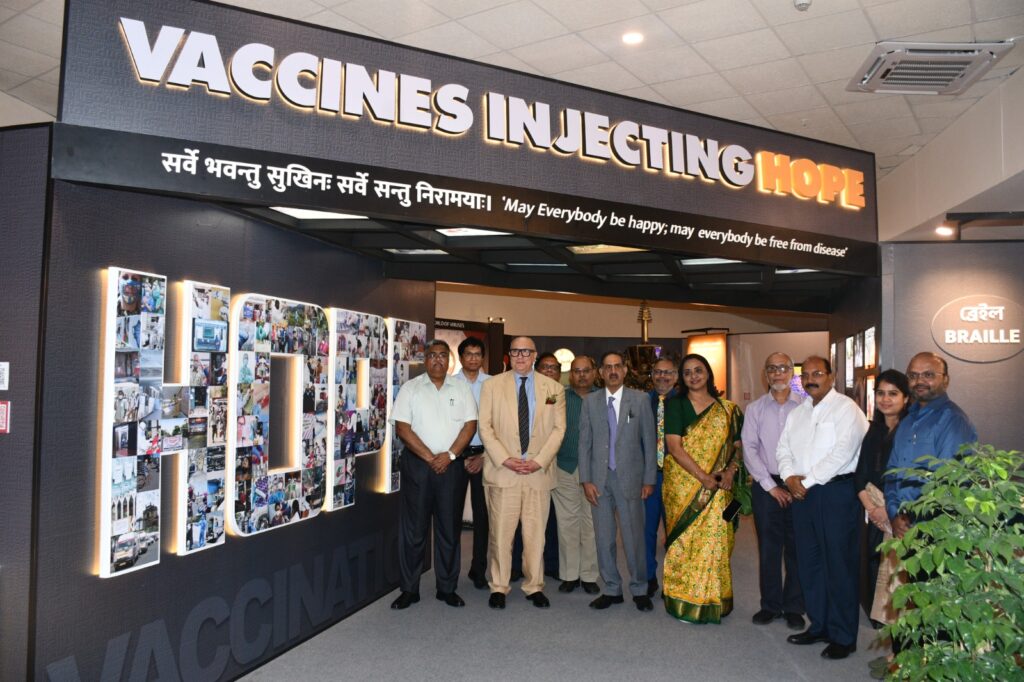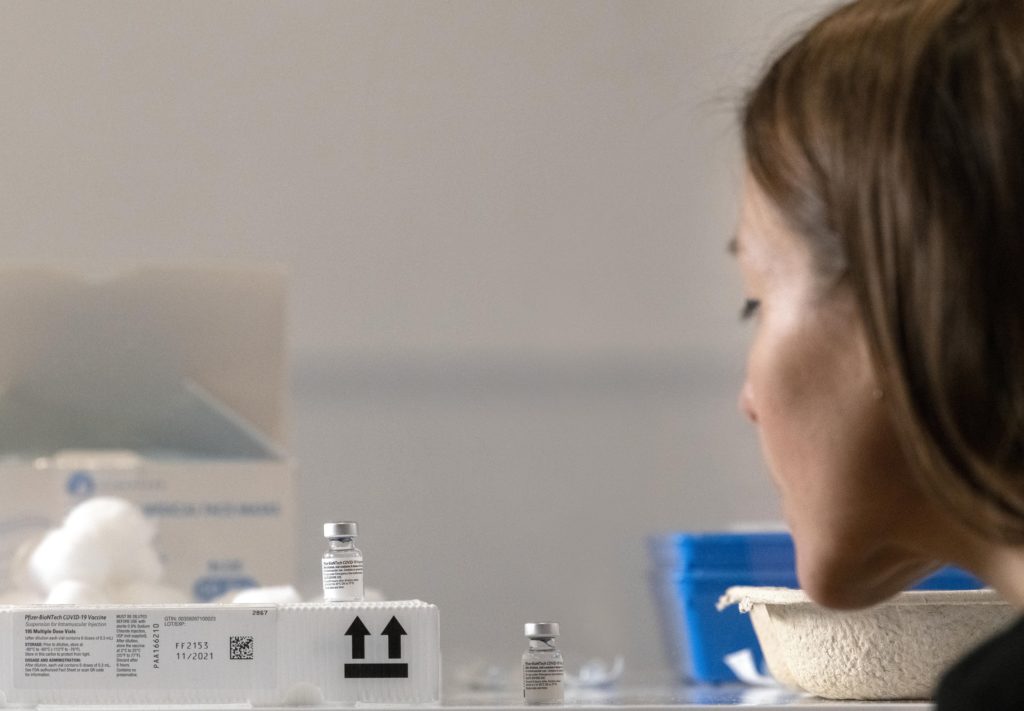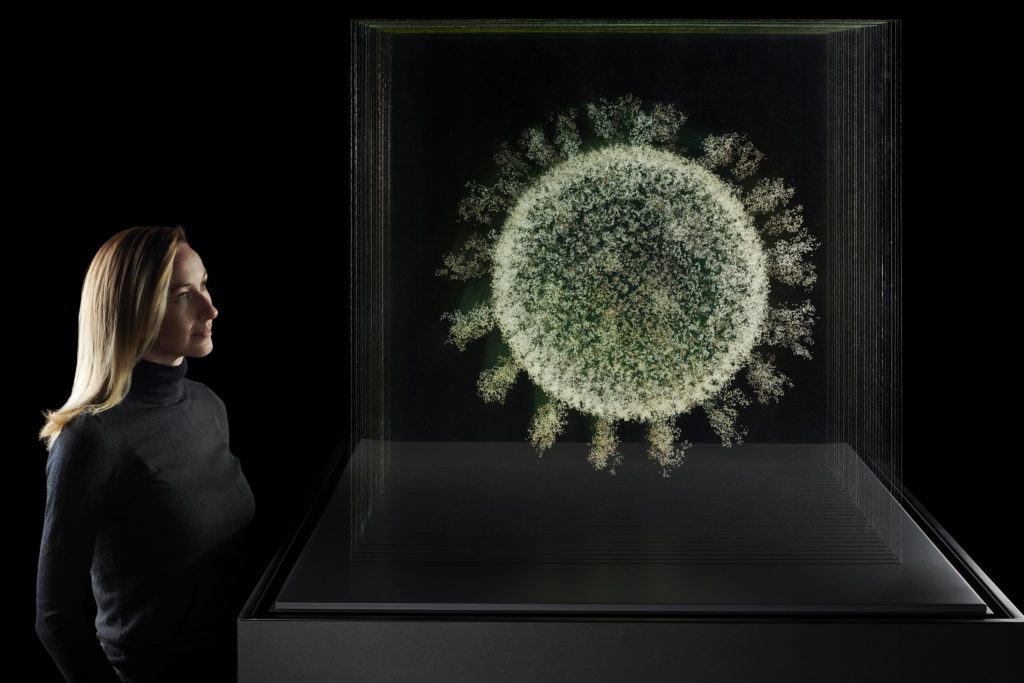Earlier this month Kolkata — the ‘City of Joy’ — opened Vaccines Injecting Hope: The Race for a COVID-19 Vaccine, the final leg of a touring exhibition that marked a milestone in international cooperation between the UK, India and China.
Thanks to support from the Wellcome, around five million people will eventually see this exhibition, which describes how a virus just 125 billionths of a metre across brought the world to its knees in the spring of 2020 and how vaccines came to the rescue within a year, not least with the help of the Serum Institute of India.
The launch in Kolkata was attended by more than five hundred people on Bengali New Year morning at Science City, the headquarters of the National Council of Science Museums (NCSM), Government of India. Kolkata was the fifth and final venue in India after three in the UK and four in China, wrapping up the exhibition’s international tour.

AD Choudhury, Director General of the NCSM, reminded the audience — a gathering of scientists, researchers, teachers, students, and science enthusiasts — how fitting it was for the exhibition to culminate in Kolkata, where extensive discussions about its conception first took place.
“This exhibition is a natural partnership,” he remarked, emphasizing how NCSM and the Science Museum Group (SMG) share a mission to bring science to audiences in ways that are engaging, relatable, and impactful.
From the internationally acclaimed touring Superbugs: the Fight for Our Lives exhibition, which dealt with the threat of microbial resistance (also supported by Wellcome), to this current endeavour, triggered by a scourge that is as old as cellular life itself, the collaboration has proven to be a testament to the power of cross-border scientific partnerships.
The day also saw the “flagging off” of a specially designed Mobile Science Exhibition Bus. With the help of science communicators, this ‘science bus’ has raised awareness of the importance of vaccines with schoolchildren and local communities across rural India, reaching more than 120,000 people so far.
Lara Clements, Wellcome’s Associate Director, Engagement, remarked: “As science delivers breathtaking advances, it is crucial that it takes society with it. No matter how exciting the treatment, how clever the delivery method, or how robust the science, public trust is critical. Wellcome is proud to support exhibitions like Injecting Hope and Superbugs, which connect communities around the world not only with complex science, but also tell the human stories at the heart of every global health challenge.”
From ‘Hunt’ to ‘Hope’
The origins of the exhibition at the Science Museum dates back to a launch of a major COVID collecting project in March 2020, at the start of the pandemic, when science collided with politics, culture and the human imagination.

Samarendra Kumar, Deputy Director General of NCSM, recalled how when discussions with international partners began the touring exhibition was initially called ‘Hunt for the Vaccine’ but, because of rapid progress in vaccine research in India and elsewhere, was renamed Injecting Hope.
Kumar, a fellow of the Science Museum, acknowledged the invaluable support from the Indian Council of Medical Research (ICMR) and contributions from eminent scientists such as Dr Priya Abraham, former Director of the National Institute of Virology, Pune, Maharashtra, and Dr Pragya Yadav at the Indian Council of Medical Research (ICMR).
The launch in Kolkata was attended by senior figures in Indian research: Prof Balram Bhargava, the former Director General of ICMR and architect of India’s COVID-19 response, who was awarded the Padma Shri award, one of India’s highest civilian awards, shared his insights into India’s vaccine journey, the challenges, and how India democratised research. He also highlighted the film Vaccine War, which chronicles India’s scientific battle against COVID-19.
Dr Kunal Sarkar, Senior Vice Chairman, Director and Head of Cardiac Surgery at Medica Superspecialty Hospital in Kolkata, reminded the audience that the spirit of curiosity and discovery runs deep, reflecting on how the discovery of fire predated modern human beings by around a million years.
Fighting Misinformation
The life-saving power of vaccines was emphasised by Dr Madhumita Roy, from the Chittaranjan National Cancer Institute, Kolkata, notably when a significant portion of the population is vaccinated, achieving herd immunity.
Prof Partha P Majumder, National Science Chair, reminisced about his days writing for The Telegraph. In 2000, “we were asked to write about the future,” he said, and he presciently wrote: ‘I am lucky to be born at a time when antibiotics and vaccines are available.’”
He also addressed the dangers of anti-vaccine propaganda and fake news, asserting that herd immunity isn’t just a theory — “we can prove it mathematically.” Majumder also reassured the audience that vaccination is not in conflict with religious beliefs, calling on them to resist harmful misinformation.
Humanizing Science
During a visit to the Injecting Hope exhibition at the Science Museum in London, Dr Debanjan Chakrabarti, Director of the British Council in East and North East India, recalled how he was moved by a display of the laptop of Professor Tess Lambe of the Oxford Vaccine Group, which she used to design the University of Oxford/AstraZeneca COVID vaccine.
At the launch he said this everyday object reminded him of all the people, with their anxieties, sleepless nights, and unwavering determination, who toiled behind the scenes to develop vaccines that saved millions of people.
Anurag Kumar, Director at Science City, Kolkata, highlighted the importance of collaboration, community, and science communication. He closed the event on a note of gratitude, acknowledging the contributions of the Wellcome, ICMR, British High Commission, British Council, NCSM, and the Science Museum Group.
Journey Across Continents
Since its launch in 2022, Injecting Hope has travelled across India, including the National Science Centre, Delhi, Raman Science Centre and Planetarium, Nagpur, Nehru Science Centre, Mumbai, and the Visvesvaraya Industrial and Technological Museum in Bengaluru.
In China, the exhibition was hosted at Guangdong Science Center, Guangzhou, Zhumadian Science and Technology Museum, Inner Mongolia Science and Technology Museum, and Wuhan Science and Technology Museum.

In the UK, the exhibition opened at the Science Museum in London, then transferred to the Science and Industry Museum in Manchester, and the National Museum of Scotland in Edinburgh, where it closes at the end of April 2025.